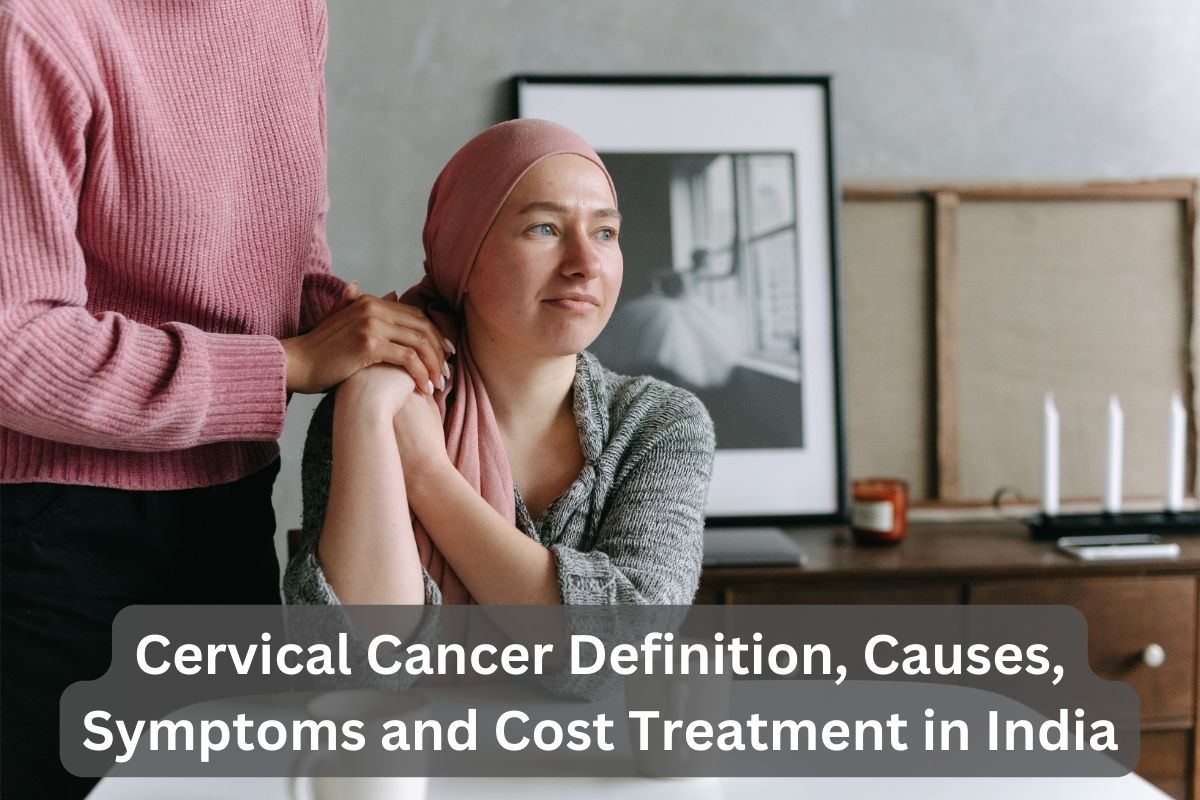Definition
Cervical cancer is a disease in which cancer cells grow in the cervix. The cervix is the lower, narrow part of the uterus, also known as the womb. It connects the uterus with the vagina.
Cancer occurs when cells in the body divide without control or order. With cervical cancer, epithelial cervix cells that line the cervical canal divide without control or order. Normally, cells divide in a controlled manner. If cells keep dividing uncontrollably, a mass of tissue forms, called a growth or tumor. The term cancer refers to malignant tumors. Malignant tumors can invade nearby tissue and spread to other parts of the body. A benign tumor does not invade or spread.

Causes
Research suggests that some sexually transmitted viruses like human papilloma virus (HPV) can cause cervical cells to begin the changes that can lead to cancer.
Risk Factors
Factors that may increase your risk of cervical cancer include:
- Infection of the cervix with HPV—the main risk factor for cervical cancer
- History of cervical dysplasia, which is a precancerous condition
- Being a woman whose mother took the drug diethylstilbestrol (DES)during pregnancy
- HIV/AIDS
- Age: over 25 years old
- Multiple sexual partners
- Sexual activity prior to age 18
- First pregnancy prior to age 20
- Smoking
Symptoms
Symptoms usually do not appear until the abnormal cells become cancerous. Then, they invade nearby tissue. When this happens, the most common symptom is abnormal bleeding, which may include:
- Bleeding between regular menstrual periods
- Bleeding after sexual intercourse, douching, or a pelvic exam
- Menstrual bleeding that lasts longer and is heavier than usual
- Vaginal bleeding after menopause
- Increased vaginal discharge that is not blood
These symptoms may also be caused by other, less serious health conditions. If you experience these symptoms, see your doctor.
Diagnosis
Your doctor will need to examine your vagina and cervix. Tissue may need to be tested. This can be done with:
- Colposcopy
- Biopsy
Treatment
After cervical cancer is found, more tests are done to find out if the cancer has spread beyond the cervix, and, if so, to what extent. This process is called staging. Treatment depends on the stage of the cancer.
Treatments include:
Surgery
The cancerous tumor, nearby tissue, and possibly nearby lymph nodes may be removed. The doctor may remove only the tumor and nearby normal tissue if the tumor is contained within the cervix. In some cases, a hysterectomy is necessary.
If the cancer is at a high stage, more tissue must be removed. Sometimes the ovaries and fallopian tubes are also removed.
Radiation Therapy (Radiotherapy)
Radiation therapy is the use of radiation to kill cancer cells and shrink tumors. Radiation may be given in two ways:
- External radiation therapy—radiation directed at the tumor from a source outside the body
- Internal radiation therapy—radioactive materials placed in or near the cancer cells
Chemotherapy
Chemotherapy is the use of toxic drugs to kill cancer cells. It may be given in many forms, including: pill, injection, and by catheter. The drugs enter the bloodstream and travel through the body. It kills mostly cancer cells, but also some healthy cells. Chemotherapy alone rarely cures cervical cancer. It may be used with surgery and/or radiation.
This therapy may also be used to help control pain and bleeding when a cure is no longer possible.
If you are diagnosed with cervical cancer, follow your doctor’s instructions.
Prevention
Finding and treating precancerous tissue in the cervix is the best way to prevent cervical cancer. Talk to your doctor about when you should have pelvic exams and Pap tests done. Another good approach is to reduce your risk of exposure to the HPV virus. There are currently two methods to do this:
- Safe sexual practice—Limit the number of sexual partners and use latex condoms.
- HPV vaccines—The vaccines protect you against some types of HPV. One vaccine, called Gardasil, is used to prevent cervical cancer by protecting against four types of HPV. Another vaccine, called Cervarix, is also approved for prevention by protecting against two HPV types. The vaccines are routinely given to girls aged 11-12 years old. A catch-up vaccine is given to young women who haven’t been vaccinated.
Screening
The Pap test is used to screen for cervical cancer. It is also used to detect cervical dysplasia. The doctor collects a sample of cells from the cervix to be tested. The doctor can also screen for HPV by testing the sample of cells.
If you are a healthy woman, many professional health organizations offer these recommendations for screening:
- If you are aged 21-29 years—It is recommended that you have the Pap test every three years.
- If you are aged 30-65—It is recommended that you have the Pap test and the HPV test every five years. Or, you can continue to have just the Pap test every three years.
- If you are aged 65 or older—You may be able to stop having Pap and HPV tests if you have had normal results, such as three normal results in a row and no abnormal results in the past 10 years.
Note: You will need to have Pap tests done more often if you have abnormal results or certain conditions, like a weak immune system or a history of cervical dysplasia or cervical cancer. Talk to your doctor about the right screening schedule for you.

